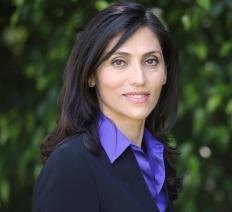Sunday, 15 June 2025
17:20 - 21:00
Moscone Center - Esplanade Ballroom
Chair: Francois Rivet, University of Bordeaux
Co-Chair: Mohyee Mikhemar, Broadcom
17:20
Doors opening and musical welcome
17:30
Welcome Message from the General Chair and TPC Chair
Student Paper Awards, Industry Paper Awards, Tina Quach Service Award

Dr. John Smee (Qualcomm, Senior Vice President of Engineering)
18:00 - 18:30
Esplanade Ballroom
Title: RFIC in the Age of 6G: Challenges, Innovations, and Future Directions
Abstract: In the upcoming era of 6G, RFICs are set to undergo transformative advancements to meet the demands of next-generation wireless communications. As on-device AI expands to more connected compute applications, the wireless data transfer requirements and number of connected edge devices will keep increasing. This talk will explore the incredible opportunities for RF development, including integrating new spectrum bands like the upper mid-band (6-15 GHz) with the wide range of existing FDD and TDD frequency bands for cellular systems. These advancements will enable innovative solutions in network infrastructure and devices, with a focus on improving the coverage and power efficiency for next-generation wireless systems. We will also delve into the latest innovations and future directions of RF technology, emphasizing its critical role in achieving the ambitious use cases envisioned for 6G such as ambient IoT, RF sensing, and full duplex communications. Join us as we highlight the bright future for RFICs and their pivotal role in the 6G revolution.
Bio: John Smee is Senior Vice President of Engineering and Global Head of Wireless Research at Qualcomm. He oversees all 5G/6G and Wi-Fi R&D projects including systems design, standards contributions, and advanced radio, hardware, and software research testbeds and technology trials with industry partners. He joined Qualcomm in 2000, holds over 200 U.S. Patents, and has focused on the innovation and commercial launches of wireless communications across 5G NR, 4G LTE, 3G CDMA, and IEEE 802.11. He also leads Qualcomm’s companywide academic collaboration program across AI, augmented/virtual reality, automotive, IOT, security, semiconductor, and wireless. John was chosen to participate in the National Academy of Engineering Frontiers of Engineering program and served on the National Academy of Medicine Committee on Emerging Science, Technology, and Innovation. He received his Ph.D. in electrical engineering from Princeton University and also holds an M.A. from Princeton and an M.Sc. and B.Sc. from Queen's University.
Maryam Rofougaran (Movandi, CEO and Co-founder)
18:30 - 19:00
Esplanade Ballroom
Title: Next-Gen RFICs: Redefining Data Centers and Wireless Networks for the AI Era
Abstract: As data demands surge across wireless networks and data centers—driven by AI growth—high-frequency RFICs are becoming vital to the future of both wireless and wireline connectivity. Operating in the millimeter-wave (mmWave) and sub-Terahertz (THz) frequencies, future RFICs unlock unprecedented data rates, enabling high-speed and low-latency links—both wirelessly to consumers as well as within data centers between GPUs. With new higher modulation techniques, sub-THz RFICs reduce latency and power usage, paving the way for sustainable, scalable data center interconnect architectures. Innovations in RF process nodes enable higher maximum frequencies and lower power consumption, optimizing RFICs’ efficiency and performance. This presentation will explore the transformative role of RFICs across applications such as next-generation radars, sensors, 5G/6G networks, and satellite communications, with a focus on their pivotal role in data center interconnections.
Bio: Maryam Rofougaran is CEO and Co-founder of Movandi, a leader in RF and millimeter wave semiconductor and technology commercializing multi-gigabit millimeter wave networks. Movandi is breaking through the coverage and network challenges of millimeter wave networks. Their BeamXR active repeater and system solutions solve today’s real-world 5G deployment challenges – by increasing 5G coverage and capacity, while reducing infrastructure costs by more than 50%, accelerating large-scale 5G commercialization. Before founding Movandi, Maryam was Senior Vice President of Radios at Broadcom Corporations and was instrumental in starting and building the wireless business at Broadcom and in growing it to annual revenue of more than $3 billion. Her first start-up Innovent System was acquired by Broadcom Corporations in 2000 and was the entrance of Broadcom into the wireless market. She is an Inventor and co-inventor on more than 300 U.S. patents. Maryam has a BS and MS in Electrical Engineering from UCLA. She was part of the team at UCLA that made RFCMOS and SOCs a reality. Maryam has been a member of various councils including CNBC CEO council and GSA CEO council.
RFIC Welcoming Reception Featuring Symposium Showcase
19:00 - 21:00
Rooms 301-304

